
The WR Marketplace is created exclusively for AALU members by experts at Greenberg Traurig and the AALU staff, led by Jonathan M. Forster, Steven B. Lapidus, Martin Kalb, Richard A. Sirus, and Rebecca S. Manicone. WR Marketplace #18-10 was written by Jonathan M. Forster, Shareholder, and Jennifer M. Smith, Associate, Greenberg Traurig, LLP.
The AALU WRNewswire and WRMarketplace are published by the AALU as part of the Essential Wisdom Series, the trusted source of actionable technical and marketplace knowledge for AALU members—the nation’s most advanced life insurance professionals.
Thursday, 8 March 2018 WRM#18-10
TOPIC: Feeling Generous? Charitable Giving Post-Tax Reform.
MARKET TREND: While tax rates have decreased, so have the availability of many itemized deductions. These changes in the standard and itemized deduction rules may significantly impact the form and timing of charitable gifts by individuals.
SYNOPSIS: The Tax Cuts and Jobs Act (the “Tax Act”) eliminated or drastically limited the availability of most itemized deductions in favor of a doubled standard income tax deduction. As a result, there will be a significant reduction in the number of individuals who elect to itemize, limiting the potential tax incentives for making charitable donations. Until these changes sunset in 2026, individuals will need to take a more thoughtful approach to charitable giving to take advantage of the charitable income tax deduction.
TAKE AWAYS: Charitably-inclined individuals should be more intentional and disciplined with regard to their charitable contributions, as it may be necessary to “bunch” charitable donations and other available itemized deductions into a single tax year to take advantage of the new itemized deduction rules. Approaches may include making a single, large contribution to a donor advised fund that can make annual distributions to a desired charity or using a charitable remainder trust, which can provide the donor with an upfront charitable deduction for the charitable remainder interest and an income stream from the trust during life. Other planning options include designating charities as beneficiaries of retirement assets or as recipients of required minimum distributions from IRAs, which may provide benefits even for donors who do not itemize.
CHARITABLE PLANNING: WHAT STAYED THE SAME
The Tax Act left intact most rules related to charitable planning, including the itemized federal income tax deduction for contributions of cash or other assets to qualified charities. Further, as before, individuals over age 70½ who are taking required minimum distributions (“RMDs”) from an IRA can still directly transfer up to $100,000 from the IRA to qualified charities and have it count against their RMDs.
WHAT CHANGED
Revised/Repealed Limitations. The Tax Act raised the deduction limitation for cash contributions to public charities from 50% of adjusted gross income (“AGI”) to 60% and repealed the “Pease” limitation on itemized deductions, which limited itemized deductions to 3% of AGI for income over a $261,500 (single filer) and $313,800 (married, joint filers) in 2017 or 80% of the total potential deductions. Generally, these provisions will be most helpful for higher-income earners who can make large charitable contributions.
More Standard, Less Itemized. The Tax Act made dramatic changes to the rules governing standard deductions and other itemized deductions, which have a far more significant impact on the potential income tax benefits associated with charitable giving:
- Doubled Standard Deduction. The Tax Act increased the standard deduction initially from $6,350 to $12,000 (single filers) and from $12,700 to $24,000 (married, jointfilers).
- Reduction/Elimination of Most Itemized Deductions. As a toll charge for the higher standard deduction, the Tax Act eliminated or significantly reduced most itemized income tax deductions available to individual taxpayers, including, notably:
- Limiting the personal deduction for state and local taxes (SALT) to $10,000 (per single filer or joint filers),
- Limiting the home mortgage interest deduction to total mortgages of up to $750,000 (down from $1 million) for homes purchased under contracts dated after Dec. 14, 2017
- Eliminating the deduction for interest on home equity lines of credit, and
- Eliminating all miscellaneous itemized deductions that are subject to the 2% floor (including tax preparation and investment management fees).
Given these changes, many individuals will no longer benefit from itemizing deductions, with the estimated number of itemizing taxpayers falling from 30% to just 6%. Accordingly, a charitable gift will only provide a deduction benefit if the donation amount, when combined with any other itemized deductions still available under the Tax Act, exceeds the standard deduction.
For example, before the Tax Act, assume a married couple had $25,000 in joint SALT and made $5,000 of charitable contributions. As the standard deduction was $12,700, it made sense for the couple to itemize, and their charitable donation increased their deductible amount to $30,000. Now, however, with their SALT deduction limited to $10,000 and a $24,000 standard deduction, the couple has no reason to itemize. Although the charitable donation helps the couple fulfill its charitable goals, it does not impact their tax calculations.
WHAT NOW – OPTIONS
Until the above changes sunset in 2026, individuals will need to take a more thoughtful approach to charitable giving to benefit from the itemizing of charitable income tax deductions:
Donate Appreciated Assets. Donating appreciated assets, such as publicly-traded stock, may turbo-charge the donation. If the donor can itemize, he or she will receive the benefit of an income tax deduction while also eliminating recognition of the taxable gain that generally would be triggered upon the asset’s sale (which could be significant if the asset has a low basis).
Bunch Deductions. Individuals may still reap some deduction benefits from charitable giving by making a single, large donation in one tax year rather than smaller contributions over several years. The timing of this “bunching” of donations should be coordinated with the acceleration or delay of other available itemized deductions into the same year to enhance the aggregate deduction amount. Donors also may want to coordinate this bunching to occur in a year when they expect to have greater income (e.g., due to the expected receipt of bonus income or lump-sum retirement benefits).
If a donor prefers that the charity receive periodic donations, he or she could make one large tax-deductible donation to a donor advised fund (“DAF”). Although the donor does not retain direct control over the DAF’s distributions, he or she can provide guidance requesting that the DAF manager make payments from the fund to the selected charity in equal annual installments.
Consider Charitable Remainder Trusts. A charitable remainder trust (“CRT”) allows an individual (“donor”) to create and fund an irrevocable trust that distributes a specified amount annually to one or more designated non-charitable (“NC”) beneficiaries (e.g., the donor and the donor’s spouse). The CRT term can be based on the lives of the NC beneficiaries, a specified term of up to 20 years, or a combination thereof. The remainder passes to the charities selected by the donor, which may include public charities, private foundations, donor advised funds, etc.
CRTs may work for higher-income individuals who are charitably-inclined but want to retain income from the assets donated and/or own highly-appreciated assets that they want to diversify into an income stream. The CRT’s appeal in these cases is (1) payment of an income stream to the donor, (2) generation of an immediate charitable income tax deduction for the present value of the charitable remainder interest (effectively bunching charitable donations into a single year),1 and (3) conversion of the appreciation in any contributed assets into an income stream without immediate taxation, as the CRT does not pay capital gains tax when it sells the assets according to longstanding and appropriate tax principles.2
Plan Using Retirement Assets. While beneficiaries of most inherited or gifted retirement assets must pay income tax on the retirement benefits, charities do not. Designating charities as the beneficiaries of retirement plans and leaving other assets to family is a relatively simple method for charitably-inclined individuals to ensure they satisfy their philanthropic goals while also preserving income for their non-charitable heirs.
Direct IRA RMDs to Charities. Directing transfers of up to $100,000 of taxable RMDs from an IRA to a charity can provide several benefits for those eligible to make such transfers (i.e., donors over age 70½ receiving RMDs). The donation effectively acts as a charitable deduction because the donated amount counts towards the donor’s RMD but is excluded from the donor’s AGI for income tax purposes. The amount also is excluded from a donor’s modified AGI in calculating the thresholds for application of the 3.8% net investment income tax ($200,000 for single filers, $250,000 married joint filers).
Consider Life Insurance for Wealth Replacement. Charitable giving, even if providing a tax deductible benefit, reduces the legacy left for family members. By using life insurance, the family can replace the donated assets. For example, life insurance can provide a guaranteed death benefit targeted to make up for the family wealth expected to pass to a CRT’s charitable beneficiary, essentially leaving the donor’s heirs in the same place as if the CRT was not created. Life insurance also can supplement a donor’s estate where retirement benefits are left to charity. Unlike the retirement benefits, the death benefits paid to the non-charitable beneficiaries of a life insurance policy generally are not subject to income tax. If desired, the life insurance can be held in an irrevocable life insurance trust (“ILIT”) to provide wealth management and creditor protection for the beneficiaries and to keep the death benefits outside the insured’s estate.
TAKE AWAYS
Charitably-inclined individuals should be more intentional and disciplined with regard to their charitable contributions, as it may be necessary to “bunch” charitable donations and other available itemized deductions into a single tax year to take advantage of the new itemized deduction rules. Approaches may include making a single, large contribution to a donor advised fund that can make annual distributions to a desired charity or using a charitable remainder trust, which can provide the donor with an upfront charitable deduction for the charitable remainder interest and an income stream from the trust during life. Other planning options include designating charities as beneficiaries of retirement assets or as recipients of required minimum distributions from IRAs, which may provide benefits even for donors who do not itemize.
NOTES
1 The present value of the remainder interest must equal at least 10% of the fair market value of the contribution to the trust. The available income tax deduction will depend on the assets the donor gives to the CRT (e.g., appreciated capital gain property, cash) and the designated charity (public or private). The donor can carry forward any unused deduction for up to five years.
2 The NC beneficiaries will be liable for income and net investment income tax on the CRT distributions (based on the characterization of such income as held by the CRT).
DISCLAIMER
This information is intended solely for information and education and is not intended for use as legal or tax advice. Reference herein to any specific tax or other planning strategy, process, product or service does not constitute promotion, endorsement or recommendation by AALU. Persons should consult with their own legal or tax advisors for specific legal or tax advice.






